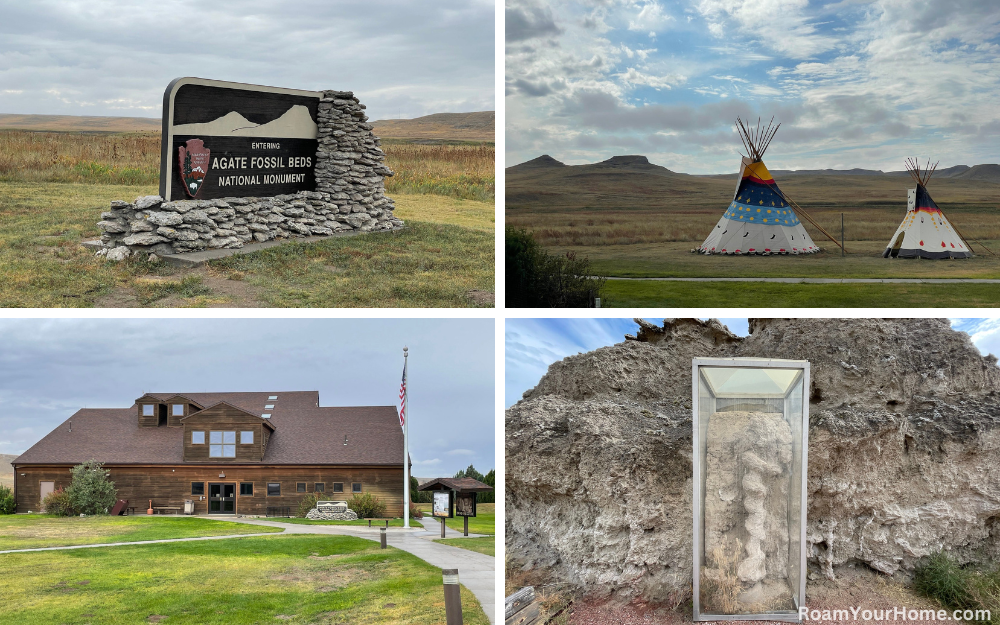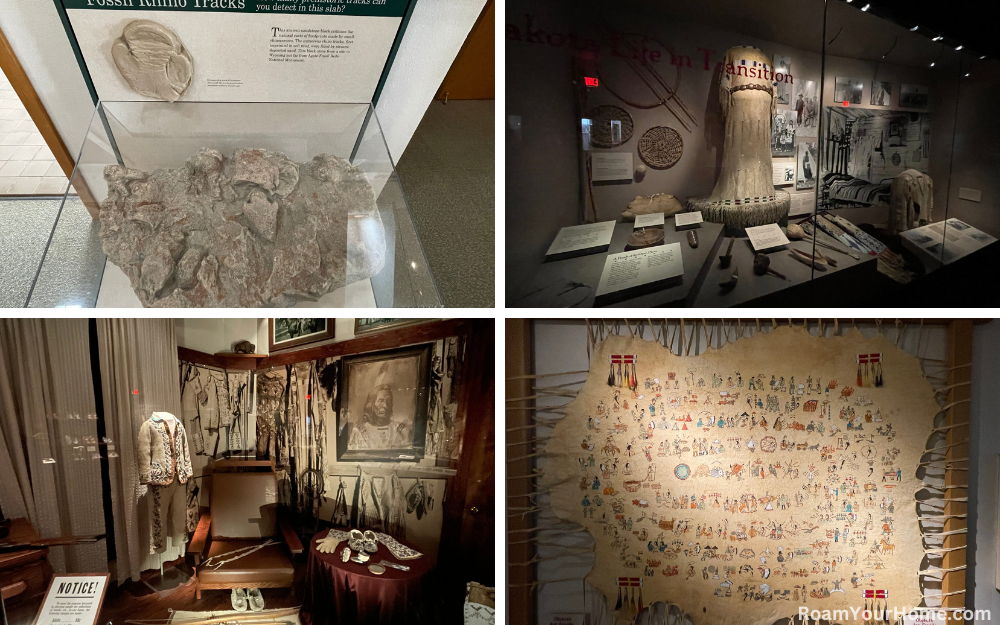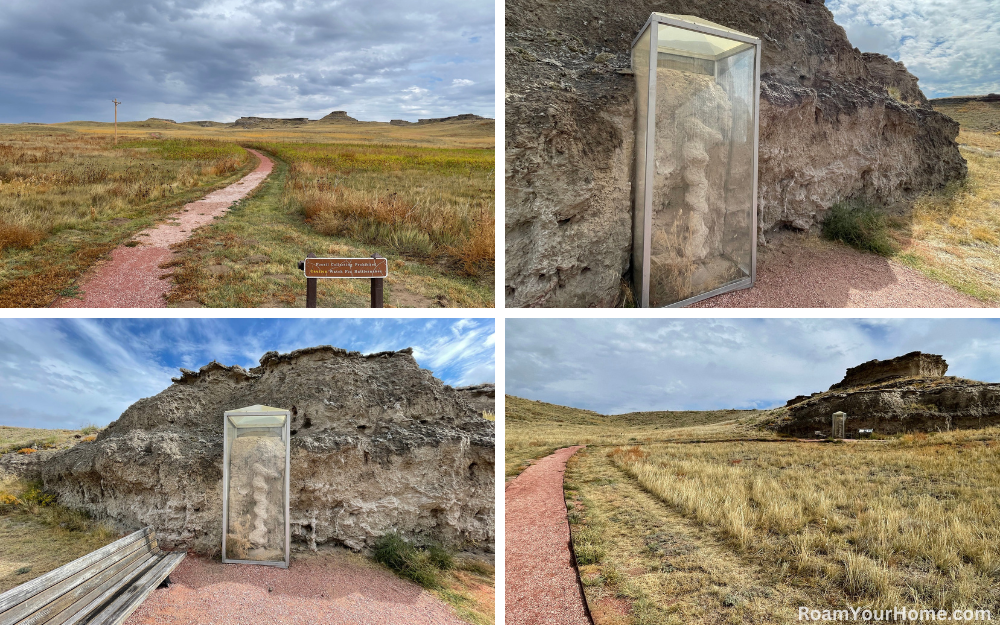
Exploring Agate Fossil Beds National Monument
Agate Fossil Beds National Monument is located in remote northwestern Nebraska. It’s not near any metropolitan area, but this off-the-beaten-path gem is a crowd-pleaser that is well worth a visit.
When we visited on a mid-October afternoon, I had not done much research, so I was unsure what to expect. When we got there, I was surprised to see quite a few cars in the parking lot. It was not full by any means, but there were more cars here than I’d seen in the last 30 miles getting here. I am confident we saw more pronghorn than people driving in. It was chilly getting out of the car. The wind whipped across the prairie as we walked towards the visitor center.

Visitor Center exhibits are impressive
When we got inside the visitor center, I was immediately impressed. “This feels like a museum, not a visitor center,” I told my wife. As expected, there are giant fossil exhibits. But there are two tales told in the visitor center. Another prominent exhibit is the history of the land and the unlikely friendship between a cattle rancher and a Lakota Chief.
Before it was a monument, it was known as the Agate Springs Ranch, a working cattle ranch owned by Captain James Cook. During this time, Cook and the famed Lakota Chief, Red Cloud, formed a friendship that would last decades until Red Cloud died in 1909. Today, the James H. Cook gallery in the visitor center explores the friendship and has more than 500 Lakota Artifacts on display.
Fossils are the primary reason people visit the monument. That was the initial reason we decided to visit. The interesting history was a bonus. The visitor center does a fantastic job explaining the history of the fossils discovered here. I enjoyed the fossilized rhinoceros print. Signs and exhibits painted a picture of what the Nebraska plains looked like 22 million ago, compared to today’s Serengeti in Africa. There are many fossil replicas and few originals inside, but to get a real feel for the park, including seeing a giant fossil in the hillside, you must put your boots on the ground.

Hiking at Agate Fossil Beds National Monument
The Fossil Hills Trail is 2.7 miles long and takes you through the queries at the University and Carnegie Hills fossil beds. Here, James Cook first discovered fossilized bones in the mid-1880s. Twenty years later, paleontologists from the Carnegie Museum in Pittsburgh, Pennsylvania, would discover some of the world’s best-preserved and most complete fossilized Menoceras, Moropus, and Dinohyus skeletons. Check with the park, but no actual fossils were on display along this trail when I visited.
We decided to hike the one-mile-long Daemonelix Trail, or “Devil’s Crokscrews.” The ranger in the V.C. recommended this trail if you only had a few hours to spend in the park. The Daemonelix Trail takes you by a preserved spiral corkscrew fossil of the Paleocastor, an ancient land beaver that lived here in the Miocene era. The fossil is protected by a clear plastic shelter, and is an awesome hike. There are informational signs along the entire loop.
How long to visit Agate Fossil Beds National Monument?
We spent about 3 hours at Agate Fossil Beds National Monument. I would have liked to have spent more time there, but it was getting dark, and we had a long drive north into the Black Hills, where we were camping that night. No matter how much time you spend on the monument, it’s worth the drive and your time.


